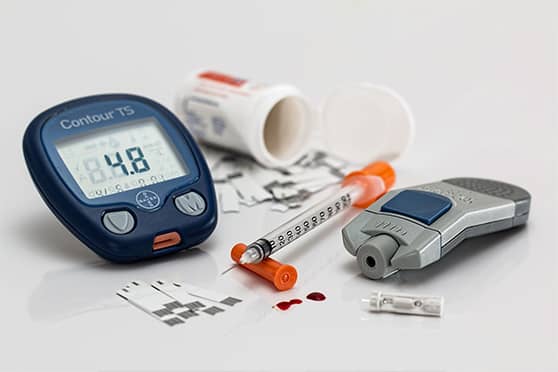An international medical team has proposed reinstating the one-hour oral glucose tolerance test to predict the risk of impending diabetes, cautioning that current diagnostic criteria such as fasting and two-hour blood glucose levels identify the risk too late.
The seven-member team, including Indian diabetologist Viswanathan Mohan, has said the onehour test — which measures blood glucose levels an hour after consuming 75gm glucose — is a better early warning biomarker than fasting or two-hour glucose levels.
People with blood glucose levels above 155mg per dl in the one-hour test are at high risk of developing diabetes and its related complications such as cardiovascular disorders, the doctors said, making their recommendation in The Lancet, a leading medical journal, on Thursday.
Current diagnostic criteria label fasting glucose below 100 as normal, 100 to 125 as prediabetes, and two-hour glucose levels below 140 as normal, 140 to 199 as prediabetes, and 200 or higher as diabetes.
The team has now recommended that 155mg per dl in the one-hour test should also be used as a cut-off to detect the early stages of the natural history of diabetes.
“You might have normal fasting glucose and normal two-hour glucose, but an elevated one-hour glucose implies a high risk of future diabetes,” said Mohan, the chief of diabetes research at the Madras Diabetes Research Foundation in Chennai.
“The one-hour cut-off could give people three to five years’ advance warning and allow them to take preventive steps through lifestyle changes like diet and physical activity to reverse the biological changes taking place and prevent diabetes,” he told The Telegraph.
An endocrinologist who was not a member of the team said he agreed with the recommendation because there is “convincing” evidence now that the one-hour test is more useful in predicting long-term progression from the normal or prediabetes states to diabetes.
“When we diagnose diabetes now at 126 at fasting, or at 200 at two-hour post-glucose, we know we’re probably missing many patients,” said Ambrish Mithal, chair of endocrinology and diabetes at Max Healthcare Hospital, New Delhi.
“These criteria (126 and 200) have been there for fear of labelling many more people (as diabetic), the fear of stigma, the fear of the burden on the public health system,” said Mithal. “But the criteria should be tightened....”
The one-hour test is not new. Until the early 1980s, the diagnostic practice involved an oral glucose tolerance test that measured blood glucose five times — at zero minutes, 30 minutes, 60 minutes, 90 minutes and 120 minutes after consuming 75gm of glucose.
But this involved poking a person five times over a two-hour period and doctors, under guidance from the American Diabetes Association and other organisations, recommended a switch to using only the fasting and two-hour sugar levels for diagnosis.
“But in our own institution and a few other places in other countries, some of us continued to measure glucose at least at the one-hour point,” Mohan said. “Our recommendation to reintroduce this cut-off is based on accumulated evidence from multiple studies by our centre and the others.”
The other team members and coauthors of the commentary in The Lancet are Michael Bergman from the New York University Grossman School of Medicine, Martin Buyscheert from Belgium, Antonio Ceriello and Giorgio Sesti from Italy, Akhtar Hussain from Bangladesh and Jaako Tuomilehto from Finland.
Their studies have suggested that 25 to 40 per cent of people with normal fasting and normal two-hour glucose levels have one-hour glucose levels above the 155mg/dl cut-off. “We believe there is enough evidence to change current practice,” Mohan said.











